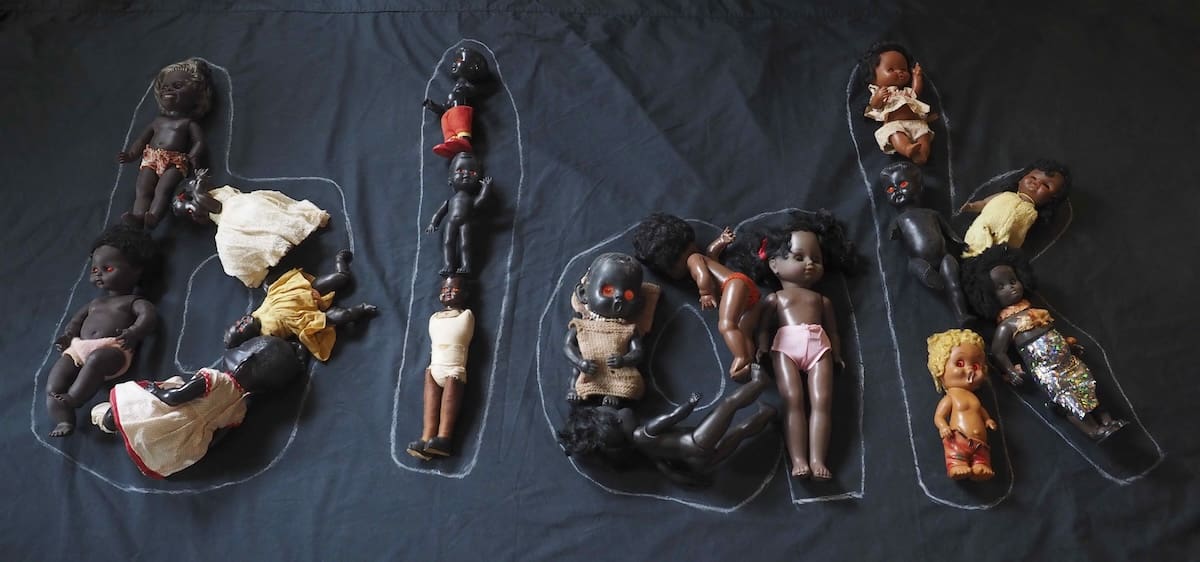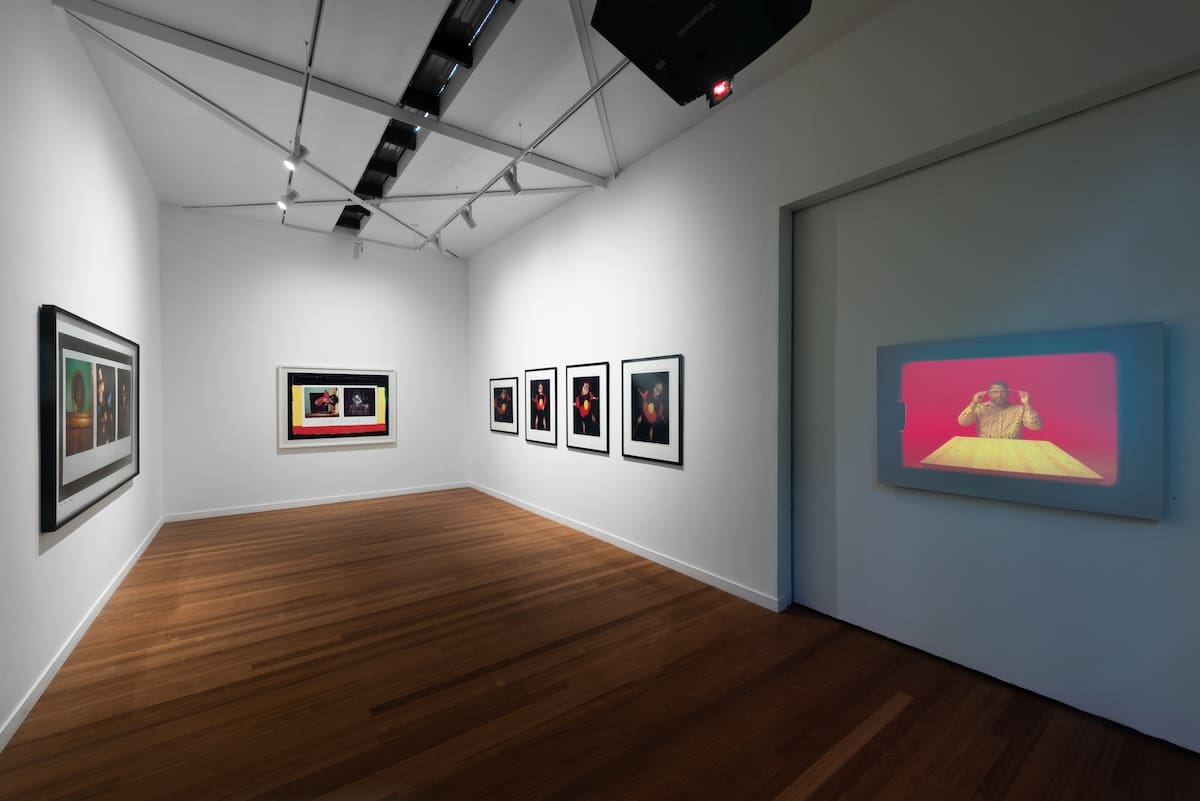Destiny Deacon “was an artist who understood all that matters”, says the writer and poet Tony Birch, one of many friends and fellow creatives attending to their grief over the death of the esteemed multimedia artist last week, at the age of 67.
“Every moment in life is a force of creativity. She gave birth to the diaspora we know as being a Fitzroy Blak,” Birch said on the weekend. “We are our own tribe; the Aboriginal children of back lanes, street corners and tram bells. Destiny wouldn’t have it any other way.”
A revered contemporary artist, political activist and lecturer, Deacon was widely credited with coining the spelling “Blak” early in her career, as a way to reclaim derogatory colonialist language used against First Nations people.

For the most well-known part of her practice, in her inner-city Melbourne home, she would pose her array of dolls in contorted configurations, limbs and heads sometimes amputated, then photograph them in colour-saturated tableaux. Operating as commentaries on urban Blak experience, Deacon had said her doll artworks were not always well understood, and difficult to get right.
“The thing is, you’ve got to make [the dolls] say something, to make them come alive,” Deacon told curator Hetti Perkins in the television series art + soul. “Anyone can take a picture of a dolly. You’ve got to make them represent us with some issue, from my little heart of hearts.”
Deacon carved a path as an artist with a distinct brand of humour, says Myles Russell-Cook, senior curator of Australian and First Nations Art at the National Gallery of Victoria, who counted Deacon as a friend and an inspiration. Her output was both comic and tragic, Russell-Cook said late last week: “Her deeply insightful, often political reflections leave an indelible mark on the world, offering nuanced, thoughtful, and intensely funny snapshots of life’s complexities.”

Born in 1957 in Maryborough, Queensland, Deacon’s ancestry was the Kuku people of the state’s far north and the Erub/Mer people of the Eastern Torres Strait. She grew up in Melbourne, in a housing commission home, with just “the basics’, she said in 2004, “plus plastic bowls, cups and plates”.
Russell-Cook, who curated Deacon’s 2020 NGV exhibition DESTINY, a retrospective spanning 30 years, recalls a conversation with Deacon in which she reminisced about living by the wharf at Port Melbourne, moving among kids who followed chalked arrows on the pavements as part of a game called “arrow chasey”, which could go on for days. “Kids didn’t stay home then,” Deacon recalled. “You’d play all day…come home when it was dark.”
These contours of Melbourne seeped into Deacon’s psyche. In the catalogue for DESTINY, the author Claire G. Coleman wrote: “Politics, the light of the city, the life of the city, the colours and energy of Melbourne: they are all embedded within [Deacon’s] work.”
Coleman references Deacon’s 1993 photographic work Dreaming in urban areas—among the first works Perkins secured during a tenure as curator at the Art Gallery of NSW—which includes a photo of the late Indigenous poet and activist Lisa Bellear, a dear friend of Deacon, atop three photos of lights taken from the West Gate Bridge in Melbourne, the images together “speaking of the urban Indigenous experience”.
Unexpected colours also drew Coleman to Deacon’s work: “They are saturated or muted in ways that cannot be arbitrary, in ways that can only be genius. Yellows are never just yellows, reds are never simply red. The palette, coming as it does from photography, from film, from light itself, is Surrealist and faintly disturbing.”

While Melbourne influenced her artistic vision, Deacon had an eye to Indigenous lives around the country: the artist Richard Bell says Deacon was a veteran of the protests at the Aboriginal Tent Embassy in 1972, and a decade later at the protests in Brisbane at the Commonwealth Games.
Yet for all her urban focus, Deacon would also construct elaborate fantasy lands, photographing Indigenous women for joyous portraits. Kim Kruger, a lecturer and researcher with Moondani Balluk, the Indigenous academic unit at Victoria University, Melbourne, recalled her daughter and nieces photographed in Deacon’s Fish Out of Water series.
“Destiny has made us kings and queens of Moomba, even if we didn’t want to be, made us super girls, mermaids, magazine cover girls, PG-rated video stars, street smart and sexy, and made us imagine our own islands,” Kruger wrote. “And doesn’t everyone want their own island away from settler colonialism?
“Both Destiny’s mother and mine, by virtue of leaving Queensland without permission, were fugitives from the state. And Destiny and her brother and sister too, by fact of being born in Queensland under the [Aboriginals Protection] Act.
“Being a racism refugee, even though we know it is inescapable wherever you go, shapes your outlook. The idea of escape from capture is ever-present.”
Deacon’s Melbourne home, meanwhile, became a refuge for dolls, examples of “Koori kitsch”, which Russell-Cook defines as “abject knick-knacks that at best portray Aboriginal people as decoration and at worst perpetuate overtly racist stereotypes”. Yet, he says, Deacon reclaimed the genre, imbuing the dolls with hidden meanings in the titles of works, their poses and photographic contexts.

Deacon’s collaborative relationships were central to her practice, says Russell-Cook, but none more so than with artist Virginia Fraser. The pair met in the 1980s at a Youth Yindi concert in Melbourne.
Over 30 years, Russell-Cook notes, Deacon and Fraser created several domestic interiors inside gallery settings. Their lounge room interiors were “always somewhat based on Destiny’s own home. Koori kitsch, photographs, posters, flags and various knick-knacks turn an otherwise ordinary-looking home into an identifiably Blak space”.
Wiradjuri/Kamilaroi artist Jonathan Jones has noted Deacon’s artistic methodology was shaped by life on the periphery, her sense of materiality founded in housing commission experiences, so imagination became her glue.
“Homes where broken windows are taped up,” he emphasised in the DESTINY catalogue about Deacon’s foundational story, “where power cords run from room to room, where the front door is always open because someone is always home”.
Destiny Deacon, 1957—2024.


